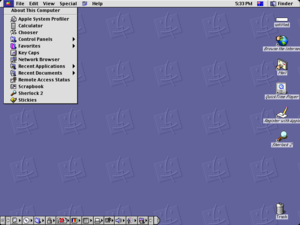
Copy Folder Tree 1.0 For Mac
Let's say you have the following folder structure on two separate. Config on Mac/Linux). Fonts (and more) in the public Library folder. The Library folder, at the root level of your OS X hard drive, is like a public library; it stores items available to everyone who logs into any account on this Mac. Leave the /System/Library folder alone. Don’t move, remove, or rename it, or do anything within it.
I would like to copy files and folders recursively from an external drive to my internal SSD.However, when I drag and drop, and, subsequently, when I use the copied files, I am always asked to enter an administrator credentials. I don't know if it is a chmod or chown issue, or both (difficulties to making the difference between them).Is there a way (through Terminal I guess) to copy the files:. while preserving all the files and folders details (i.e. Original date/time stamps and whatever metadata necessary/useful);.

but gaining ownership (so I don't have to enter administrator credentials each time I want to look, modify or move a file).I guess it is either cp or rsync, but I must admit having difficulties sorting out and understanding all the available switches. Keep in mind that when you cross the boundaries of a drive, you will always copy the files by default. You can hold down either Cmd or Alt (I always confuse them, but cannot verify it right now) to switch between copying and moving. If you do not have the proper permissions, you will ALWAYS copy the files instead of moving them. To help that, you need to run the two last commands I posted in my answer on the folder holding the files. On any drive OTHER THAN the boot drive, you can also run those commands on the entire drive.–Apr 15 '15 at 18:01. Copying files without using chmod or chown:create a tar.gz archive of what you want to copy: tar cvzf backup.tgz copy the tgz file to your destination and expand it there: tar xvzf backup.tgzThe advantage of this method is that it works for folders, keeping the permissions of each file, the folder can be of any size and it can work with different file system formats, for example I used an external hdd with exfat to copy my tgz from a mac to a linux without any problem.
How to: Copy a Directory to Another Directory in Visual Basic. 2 minutes to read.In this articleUse the method to copy a directory to another directory. This method copies the contents of the directory as well as the directory itself. If the target directory does not exist, it will be created. If a directory with the same name exists in the target location and overwrite is set to False, the contents of the two directories will be merged. You can specify a new name for the directory during the operation.When copying files within a directory, exceptions may be thrown that are caused by specific file, such as a file existing during a merge while overwrite is set to False. When such exceptions are thrown, they are consolidated into a single exception, whose Data property holds entries in which the file or directory path is the key and the specific exception message is contained in the corresponding value.
Download plantation lullabies rar free online. She is especially inspired by the collaborative process that comes with making an album. “When I’m writing songs and recording the demos, I’m having my own awesome experience in my attic, or on a plane, or in a hotel room, just making my beats on my laptop.
To copy a directory to another directory.Use the CopyDirectory method, specifying source and destination directory names. The following example copies the directory named TestDirectory1 into TestDirectory2, overwriting existing files. My.Computer.FileSystem.CopyDirectory('C:TestDirectory1', 'C:TestDirectory2', True)This code example is also available as an IntelliSense code snippet. In the code snippet picker, it is located in File system - Processing Drives, Folders, and Files.